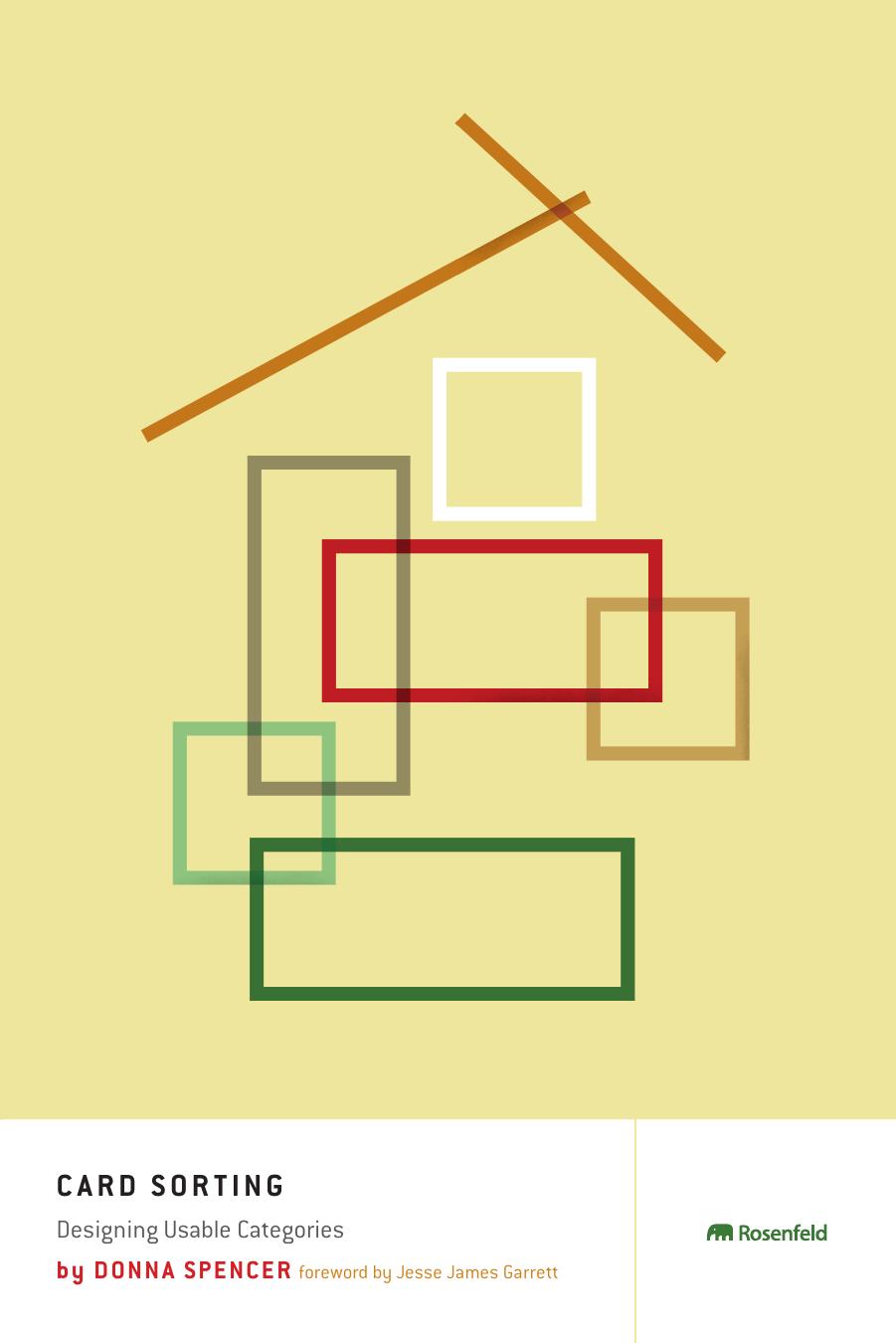Card Sorting: Designing Usable Categories by Donna Spencer

Author:Donna Spencer
Language: eng
Format: epub, pdf
Publisher: Rosenfeld Media
Published: 2009-10-27T16:00:00+00:00
We did card sorts with the client team and again with target users. Comparing the two results was interesting, and helped to sell the design process. However, since the client team was also a major audience, it highlighted compromises we would need to make.
—Austin Govella (thinkingandmaking.com)
Organizing Participants into Teams
If you are planning on running a team-based card sort, try to involve people who know each other—that way, the team doesn’t have to figure out who’s who and how to work together. But be careful about the relationship of the people in the team. If you include managers and staff in the same team, staff will usually defer to the manager. Also, IT people are often intimidating to non-IT people.
Of course, it’s not always possible to arrange teams into people who know each other. If your participants don’t know each other, plan an icebreaker activity, some discussion of the product, or a practice sort before the main activity. This tactic allows the team to meet and set the group dynamic before attempting the main activity.
In my experience, the ideal team size is three. Three people work well together, can listen to each other, and can physically fit around a table to shuffle cards around. Four or five people can work successfully, but I’ve noticed that one or two of them tend to stand back and let the others do the work.
Download
Card Sorting: Designing Usable Categories by Donna Spencer.pdf
This site does not store any files on its server. We only index and link to content provided by other sites. Please contact the content providers to delete copyright contents if any and email us, we'll remove relevant links or contents immediately.
Deep Learning with Python by François Chollet(14619)
The Mikado Method by Ola Ellnestam Daniel Brolund(11881)
Hello! Python by Anthony Briggs(11794)
OCA Java SE 8 Programmer I Certification Guide by Mala Gupta(11244)
Dependency Injection in .NET by Mark Seemann(11003)
A Developer's Guide to Building Resilient Cloud Applications with Azure by Hamida Rebai Trabelsi(10523)
Algorithms of the Intelligent Web by Haralambos Marmanis;Dmitry Babenko(9837)
The Well-Grounded Java Developer by Benjamin J. Evans Martijn Verburg(9425)
Grails in Action by Glen Smith Peter Ledbrook(9169)
Hit Refresh by Satya Nadella(9038)
Sass and Compass in Action by Wynn Netherland Nathan Weizenbaum Chris Eppstein Brandon Mathis(8811)
Secrets of the JavaScript Ninja by John Resig Bear Bibeault(8598)
The Kubernetes Operator Framework Book by Michael Dame(8471)
Test-Driven iOS Development with Swift 4 by Dominik Hauser(8310)
Exploring Deepfakes by Bryan Lyon and Matt Tora(8292)
Robo-Advisor with Python by Aki Ranin(8245)
Practical Computer Architecture with Python and ARM by Alan Clements(8218)
Implementing Enterprise Observability for Success by Manisha Agrawal and Karun Krishnannair(8189)
Building Low Latency Applications with C++ by Sourav Ghosh(8094)
